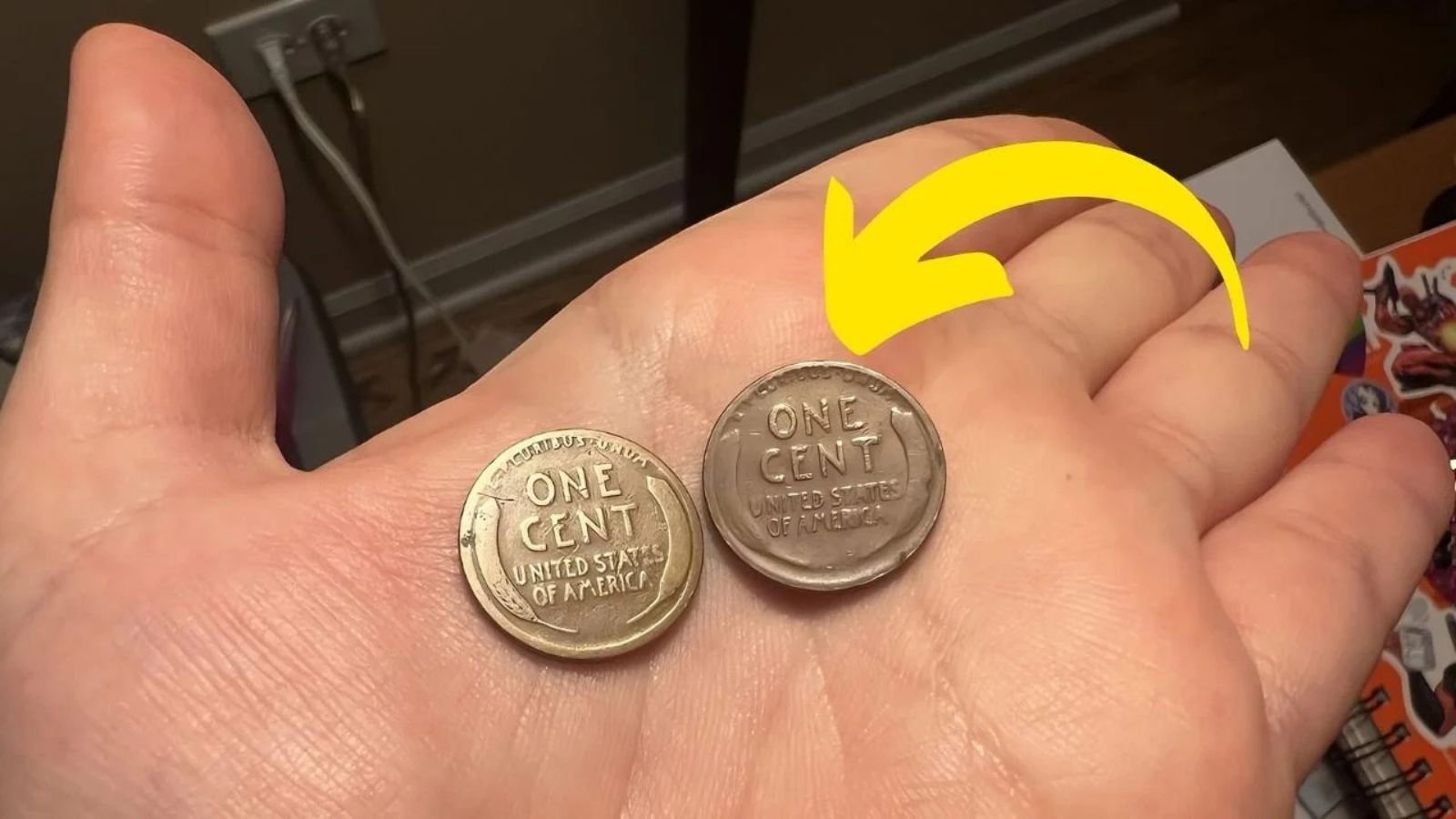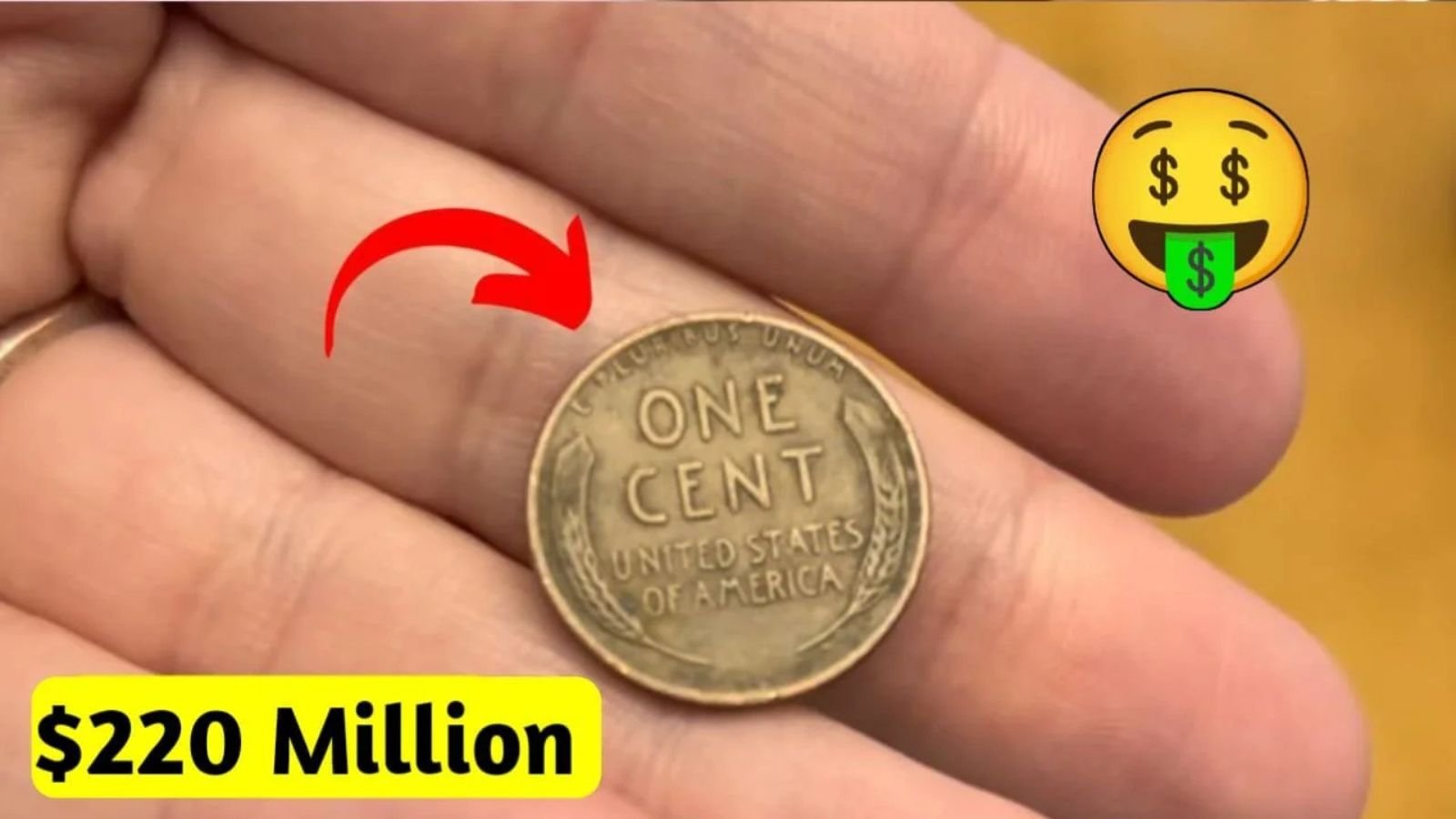In the world of numismatics—where history meets treasure hunting—the stories that make headlines are often those that defy belief. Among these tales, none is more jaw-dropping than the rumor of a Lincoln Wheat Penny supposedly worth an astounding $3 billion. Yes, billion—with a “B.” This claim has ignited the imagination of collectors and everyday citizens alike, prompting a nationwide frenzy to inspect every old penny tucked in couch cushions, coin jars, and forgotten piggy banks. But is there any substance to this claim, or is it simply another viral myth that has spiraled out of control?
Let’s dive deep into the legend of the Lincoln Wheat Penny valued at $3 billion and separate fact from fantasy.
The Lincoln Wheat Penny Valued at $1.5 Million, Still in Circulation
Lincoln Wheat Penny: A Numismatic Icon
The Lincoln Wheat Penny is one of the most recognizable and beloved coins in American history. First introduced in 1909, it marked a significant departure from previous U.S. coinage by featuring a real person—President Abraham Lincoln—on its obverse. Designed by Victor David Brenner, the coin’s reverse side features two stylized wheat stalks flanking the words “ONE CENT,” a design that remained in place until 1958.
More than just a piece of currency, the Lincoln Wheat Penny represents a historical milestone. It was released to commemorate the 100th anniversary of Lincoln’s birth and became an enduring symbol of American ideals. Over nearly five decades of production, billions of Lincoln Wheat Pennies were minted, primarily in copper—except during World War II, when a brief material change created one of the most valuable error coins in history.
The Origins of the $3 Billion Rumor
The story of the $3 billion Lincoln Wheat Penny has gained traction online in recent years, often popping up in clickbait articles, viral videos, and poorly sourced social media posts. The premise is simple but compelling: a rare and valuable Lincoln Wheat Penny, struck under mysterious circumstances or using an unusual metal, is still out there—possibly in circulation—and has an eye-watering value attached to it.
But where did this idea come from?
Most likely, the story stems from confusion surrounding several real but much lower-valued rare Lincoln Wheat Pennies—such as the famed 1943 copper penny. These genuine rarities have sold for hundreds of thousands or even over a million dollars at auction. Somewhere along the line, however, the narrative snowballed. A few million turned into a billion, then three billion. And now we have headlines claiming that one lone Lincoln Wheat Penny is worth more than the GDP of small countries.
Let’s be clear: there is currently no verified Lincoln Wheat Penny that has sold for, or is officially valued at, $3 billion. However, that doesn’t mean the coin doesn’t have its share of mysteries and potential treasures.
What Makes a Lincoln Wheat Penny Valuable?
Despite the hyperbole, it’s true that some Lincoln Wheat Pennies are incredibly valuable. These aren’t just coins that are old—they’re usually rare due to specific errors, low mintage, or unique historical circumstances. Some of the most sought-after Lincoln Wheat Penny variants include:
-
1909-S VDB: This is the holy grail for many collectors. Only 484,000 were minted in San Francisco, and the initials “VDB” (for Victor David Brenner) on the reverse were later removed due to public criticism. These coins can fetch well over $1,000 in circulated condition and significantly more if uncirculated.
-
1914-D: Minted in Denver with a relatively low production run, this coin is rare and desirable. Prices range from several hundred to tens of thousands of dollars depending on condition.
-
1922 No D: This Denver-minted coin is famous for an error where the “D” mintmark was accidentally omitted, making it highly collectible.
-
1943 Copper Penny: During WWII, the U.S. Mint switched from copper to zinc-coated steel for penny production to conserve copper for wartime needs. However, a small number of copper planchets from 1942 were accidentally used in 1943. These copper Lincoln Wheat Pennies are incredibly rare—fewer than 20 are known to exist—and have sold for more than $1 million.
Any Lincoln Wheat Penny with unusual features, misprints, or incorrect metals can potentially hold significant value.
Could a Billion-Dollar Coin Still Be in Circulation?
Despite the fact that no Lincoln Wheat Penny has ever come close to being worth $3 billion, it’s not outside the realm of possibility that valuable Wheat Pennies are still floating around in everyday circulation. Estate sales, inherited coin collections, and old bank rolls have yielded rare finds before—and they can again.
What makes the Lincoln Wheat Penny so fascinating is its accessibility. Unlike gold coins or rare currency notes that were hoarded or limited in distribution, Wheat Pennies were once a staple of everyday commerce. Even today, it’s not unheard of for people to stumble upon one in pocket change or forgotten collections.
How to Spot a Potentially Valuable Lincoln Wheat Penny
So, how can you tell if the Lincoln Wheat Penny in your hand is worth something more than a cent? Here are some tips:
-
Check the Date and Mintmark: Early mintages, especially from the San Francisco and Denver mints, are more likely to be valuable.
-
Examine the Condition: Coins with minimal wear, clear details, and no major scratches are more desirable. Mint State (MS) coins are graded from 60 to 70 and command the highest premiums.
-
Look for Errors: Double dies, off-center strikes, repunched mintmarks, or missing elements (like the “D” in 1922 No D) are indicators of increased value.
-
Metal Composition: The 1943 copper penny is one of the most famous errors in U.S. history. A simple magnet test can help determine if your 1943 penny is copper or steel—copper won’t stick to a magnet.
-
Weight It: A standard Lincoln Wheat Penny weighs about 3.11 grams. If your 1943 penny is heavier than the typical 2.7 grams of a steel cent, you might be onto something.
What To Do If You Find a Rare Coin
If you believe you’ve found a rare Lincoln Wheat Penny, resist the temptation to sell it quickly or post it online. Instead, follow these steps:
-
Handle With Care: Use gloves and avoid touching the face of the coin to preserve its condition.
-
Authenticate It: Have it evaluated by a professional grading service like PCGS (Professional Coin Grading Service) or NGC (Numismatic Guaranty Corporation).
-
Get Multiple Opinions: Especially if the coin is particularly unusual or appears to have an error. A second opinion can save you from accepting a lowball offer or falling for a scam.
-
Do Your Research: Compare your coin to others that have been sold at auction. Reliable platforms like Heritage Auctions or Stack’s Bowers have detailed histories of past sales.
Why the Lincoln Wheat Penny Continues to Captivate
Whether or not a $3 billion Lincoln Wheat Penny exists, the very idea speaks volumes about the cultural and historical weight these coins carry. They’re not just currency—they’re artifacts from a different era, telling stories of war, economic hardship, and innovation. For over a century, the Lincoln Wheat Penny has stood as a testament to American history and ingenuity.
Collectors treasure them for their historical value. New hobbyists are drawn by the thrill of discovery. And now, thanks to viral legends, even the average person is curious about what might be lurking in their pocket change.
Final Verdict: Myth or Possibility?
Let’s be real: no Lincoln Wheat Penny has sold—or is likely to sell—for $3 billion. That figure belongs squarely in the realm of myth and clickbait. But dismissing the story entirely misses the point. There are Lincoln Wheat Pennies worth hundreds, thousands, or even a million dollars. And yes, some of them may still be hiding in plain sight.
So, while the $3 billion valuation is an exaggeration, it serves a greater purpose: reigniting interest in coin collecting, sparking curiosity, and reminding us that even the smallest, most ordinary object can hold extraordinary secrets.
Next time you sort through your spare change, don’t be too quick to toss aside those old pennies. A Lincoln Wheat Penny—whether worth a cent or a million—might be waiting for you to discover its true value.
Some Important Link
| Telegram Group | Click Here |
| WhatsApp Group | Click Here |
| Home Page | Click Here |
The Rare Bicentennial Quarter Valued at $2.5 Billion, Still in Circulation













